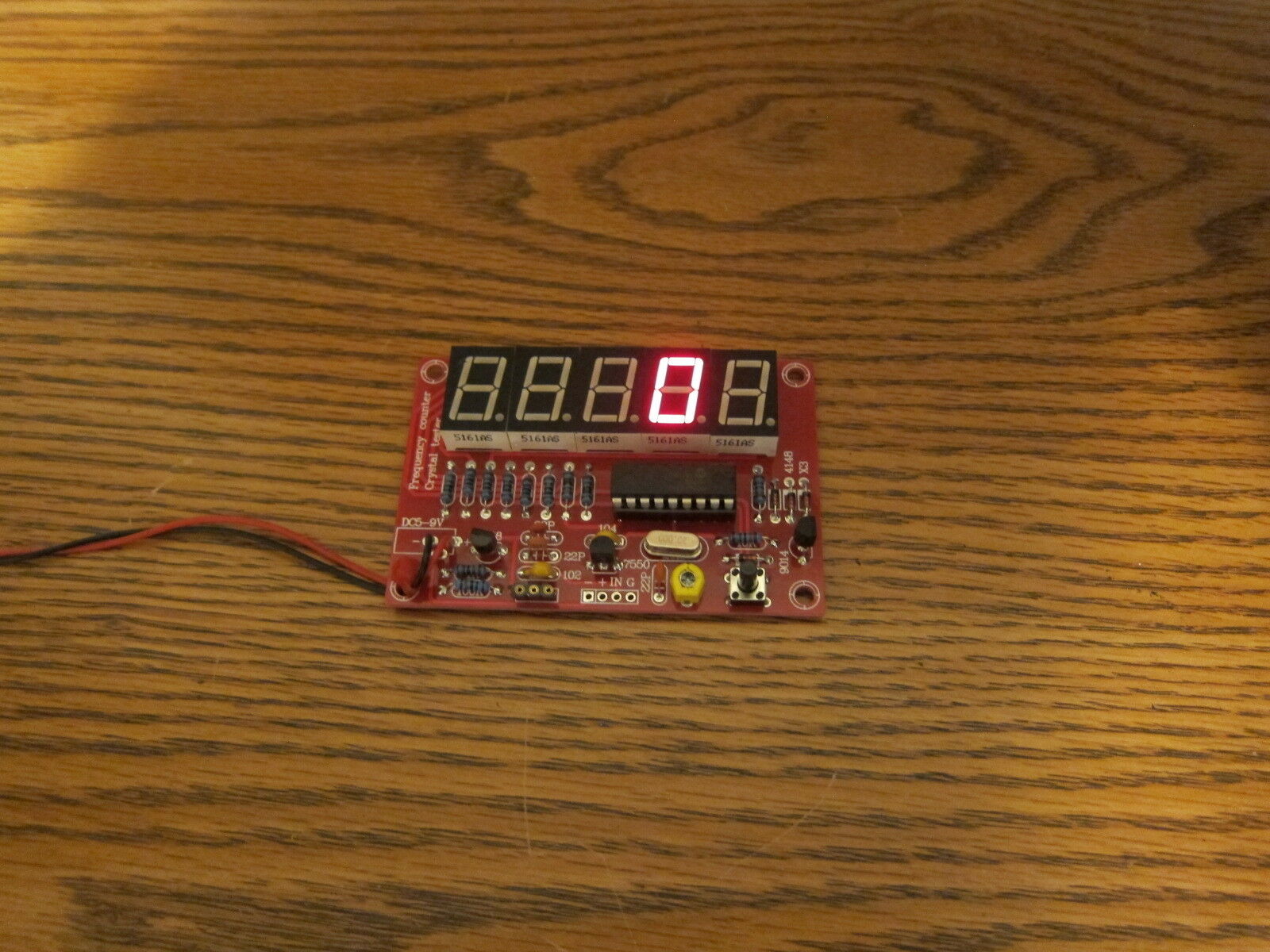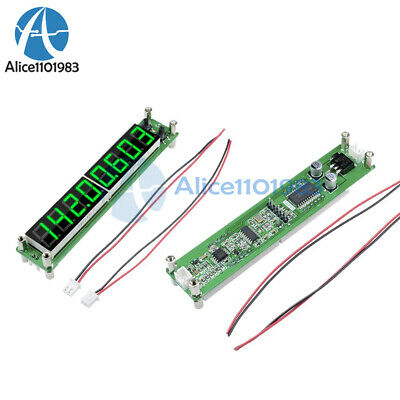-40%
Crystal Oscillator Frequency Counter Tester 1Hz - 6Mhz ver.B USA seller
$ 31.15
- Description
- Size Guide
Description
Crystal Oscillator Frequency Counter Tester 1Hz - 6Mhz ver.B USA seller. Comes completely assembled and ready to use. It will test HC-49S, HC-49U types crystals and few cylindrical type crystals. Battery is not included. Comes with documentation, 9v battery cable adapter. No oscilloscope required. It is a stand alone unit, all by itself.
The main features of the frequency counter are:
· frequency range
1Hz - 6Mhz
five digits resolution
· automatic range switching with different gate times
· optional addition or subtraction of a frequency offset (programmable)
· very low component count: a PIC 16F628, 5 7-segment LED displays,
a 20MHz crystal and a few resistors
· optional (configurable) power-saving mode which automatically turns
the display off if the frequency didn't change significantly within 15
seconds
· USB 5V power supply can be used.
The display range is automatically switched to give the maximum readout
accuracy (with 5 digits). The gate time is also selected automatically as
listed in the following table:
Frequency range Display Gate time Decimal point
0 ... 9.999 kHz X.XXXX 1 second flashing (which means "kHz")
10 ... 99.99 kHz XX.XXX 1/2 second flashing
100 ... 999.9 kHz XXX.XX 1/4 second flashing
1 ... 9.999 MHz X.XXXX 1/4 second steady (which means "MHz")
10 ... 50.00 MHz XX.XXX 1/4 second steady
Adding or subtracting an offset frequency
If the counter is used in a shortwave receiver or transceiver, you may want
to add or subtract an offset value from the measured frequeny. The offset
frequency is the same as the intermediate frequency in many cases, because
the counter is usually connected to the receivers VFO (variable frequency
oscillator). For this purpose, a programming mode (aka "setup mode") has
been implemented in the firmware so you can enter an offset frequency
without reprogramming (or even reassembling) the PIC firmware.
To enter programming mode, press and
hold the programming key until the PIC shows "ProG" on the LED display.
Then release the key. You are now in the first menu of the programming
mode.
To select the next menu, press the key for a short time (less than a second).
To execute the selected function, press the key for a longer time (more than
a second). The menu functions are :
· "Quit" : Aborts programming mode without changing anything.
· "Add" : Saves the previously measured frequency permanently, so it
will be added in future.
· "Sub" : Saves the previously measured frequency permanently, so it
will be subtracted in future.
· "Zero" : Sets the frequency offset to zero, so the display will show the
measured frequency without offset. The previously programmed
offset will be lost.
· "Table": Allows you to select a predefined offset value from a table.
The table itself is also located in the PIC's data EEPROM, so you
may find different values in it. When skipping through the table, the
frequencies are shown in numeric form, like 455.0 (kHz), 4.1943
(MHz), 4.4336 (MHz), 10.700 (MHz). After selecting an entry (long
keypress), you will be taken back to the main menu to select "Add" or
"Subtract".
· "PSave" / "NoPSV": turns the power-saving on/off. In power-saving
mode, the display is turned off after 15 seconds of no "significant"
change in frequency, and on again as soon as the frequency changes
by more than a few dozen Hertz (in the 3..4 MHz measuring range).















